Text
Current linguistics obsession: the difference in English between “few/little” and “a few/a little”
“He convinced few people” Negative connotation; he did not convince that many people.
“He convinced a few people” Neutral to positive connotation; he did manage to convince some people.
“They found a little food” “Neutral to positive connotation; it might not be a lot, but they did manage to find some food.
“They found little food” Negative connotation; that’s not going to be enough food.
31K notes
·
View notes
Photo
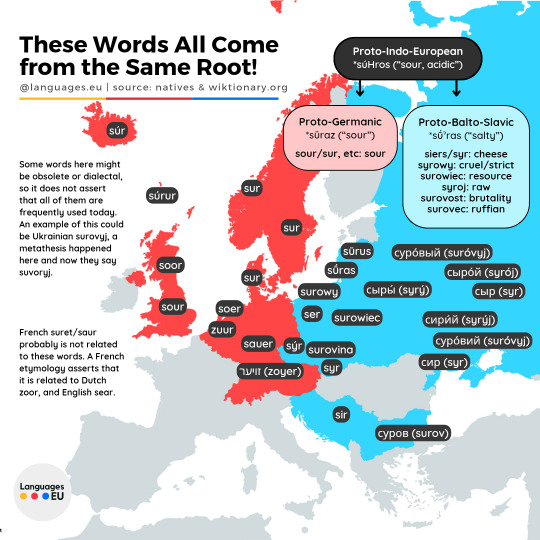
These Words All Come from the Same Root!
by u/languageseu
152 notes
·
View notes
Text
when i'm typing officially i love to capitalize nouns. i capitalize nouns like nobody's business
14K notes
·
View notes
Text

Complimenting and Criticizing the Food in Vietnamese! 🍿 PS: Learn Vietnamese with the best FREE online resources, just click here https://www.vietnamesepod101.com/?src=tumblr_infographic_critics_050223
10 notes
·
View notes
Text
Ukrainian heart fundraiser 💙💛
Please, read this post to learn more!
Hi, my name is Oleksandra, and I am from Ukraine. I need your help buying yarn for a good cause, and I would greatly appreciate it if you could spare a few minutes to read my story.
We all know that my country is currently in the middle of a war, and it's something I've never expected to happen. When the worst nightmare you could've imagined becomes the new reality, your whole being is consumed by panic and fear. But once the first shock had worn off, every Ukrainian started to ask themselves: "What can I do personally to help?"
At this time last year, I accidentally saw a beautiful heart-shaped keychain in the colors of the Ukrainian flag, which are blue and yellow. As a crochet lover, I thought of it as a perfect opportunity for me to create something unique and uplifting for our soldiers. Even though I wasn't sure whether or not simple keychains could be helpful, the response that I got was overwhelming. According to volunteers who usually send my keychains with care packages, soldiers treat those hearts as a reminder of why they are still fighting, like a talisman that brings them the emotional support they desperately need.
So far, I've made over 800 keychains, but the demand is still high. Unfortunately, I don't have the funds to buy yarn and other materials in the same quantity as before. This is why I'm asking for your help to give more soldiers hope in the form of a heart-shaped keychain. You can donate here:
buymeacoffee
At the bottom of this post, you can also find several photos of soldiers with my keychains. At first, I wanted to create a gofundme account, but unfortunately, this platform is currently unavailable in Ukraine. Please remember - there is no such thing as a small donation, and even a few coins can make a difference. I would appreciate you sharing this page around. Thank you for your time!

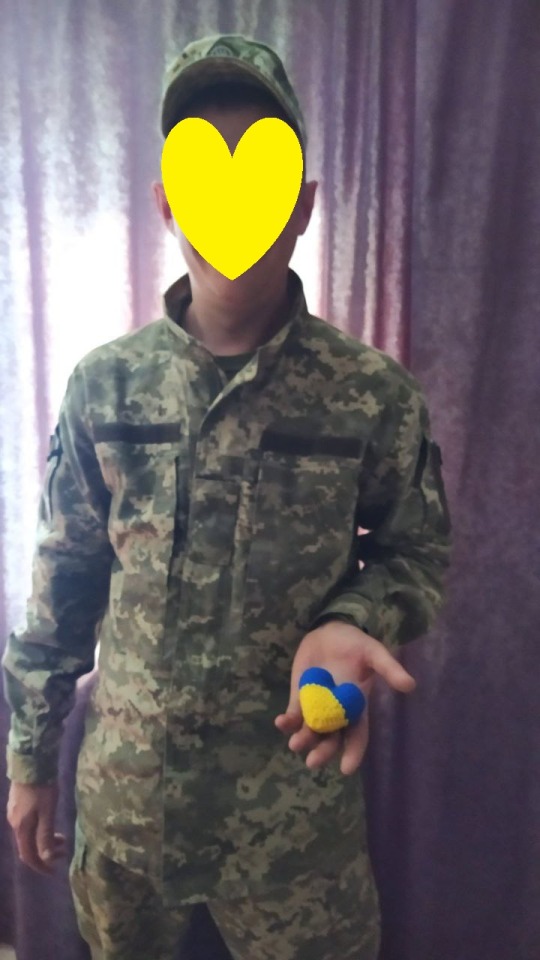



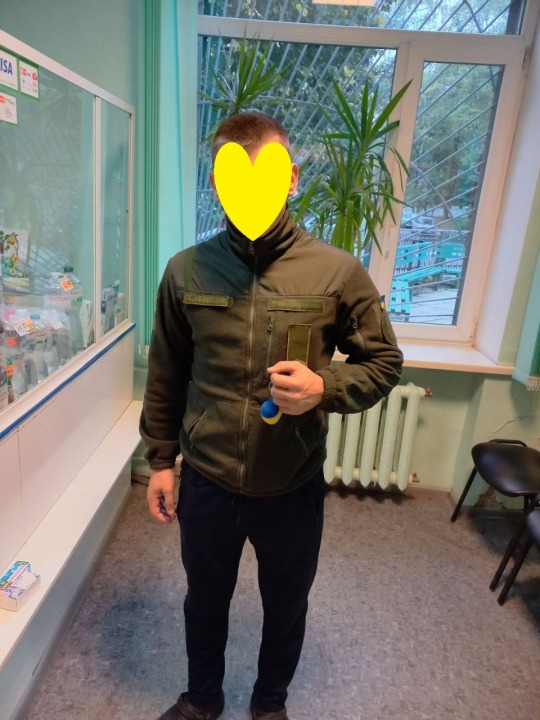
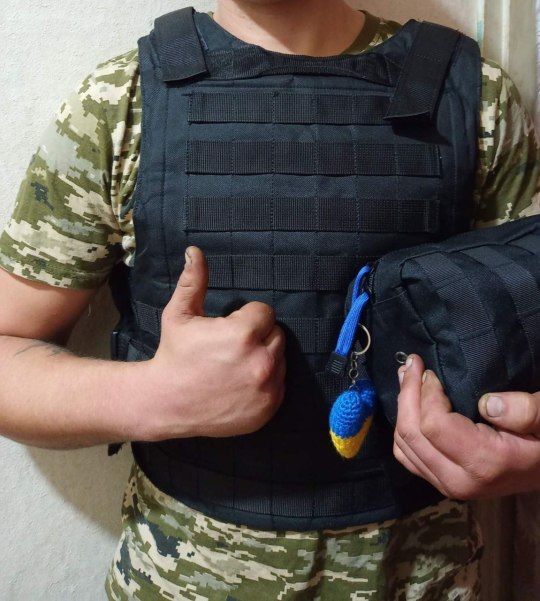

170 notes
·
View notes
Text
Oh and as far as “collocations” with certain adjectives it tends to be certain specific things. As an example, bello/a “beautiful” is often placed behind nouns; la mujer bella “the beautiful woman”. If you put it in front you sound poetic and extremely flattering la bella mujer “the BEAUTIFUL woman”
…And then you have a collocation which is a set phrase you can’t say a different way: las bellas artes “the fine arts”
Keep reading
88 notes
·
View notes
Text
15K notes
·
View notes
Text
LGBTQ+ TV-SHOWS UPDATE 🌈
Last month I explained how my friend needs feedback for his website Lingopie where you can learn a language watching movies and tv-shows with dual subtitles and effective tools to progress super, super quick! Here is how it works by the way:
I did a poll asking if people would be interested in them obtaining licensing for LGBTQ+ tv-shows and movies…but the problem was that they have limited funds…
98% or so of you were in favor of them adding LGBTQ shows to their learning platform. I passed on all your replies and he was thrilled to see so many of you willing to help. He's been working hard these past couple weeks on adding LGBTQ+ tv-shows in a variety of languages so I am excited to announce you can now learn the following languages in gay!
Japanese 🇯🇵, Korean ��🇷, Spanish 🇪🇸, French 🇫🇷, German 🇩🇪, Italian 🇮🇹, Portuguese 🇵🇹 and English 🇺🇸
Video streaming takes a lot of data, so usually there is no free trial but as a thank you, he wants to invite you to test Lingopie 7-days for free and get a big discount when you sign up! This offer is only available for a limited time.
Hope you have fun learning a new language and acing those exams if you have any!
Click here to try it out! ✨
7K notes
·
View notes
Text
桜梅桃李 (o-bai-to-ri) “never compare yourself to others”

This yo-ji-juku-go (Japanese 4-character idiom) is comprised of 4 beloved Japanese trees. They are:
桜 = cherry (sakura)
梅 = apricot (ume)
桃 = peach (momo)
李 = plum (sumomo)
桜 (sakura) are of course the cherry blossom trees famous for blooming spectacularly and incredibly briefly once a year, usually in April. Sakura trees in full bloom is an annual event, and people go to their local park to see them, take photos, and have picnics underneath them. It's such a big deal that it's reported on the weather forecast, with reporters commenting on how quickly the "sakura front" is moving northwards across the country.
梅 (ume) is the "ume" in umeshu! This is a sweet liqueur which is made from soaking ume in sake. It tastes amazing, and is one of the things I miss most about Japan. Japanese learners will no doubt recognise "ume" as usually being translated as "plum", however it is technically closer to the Western apricot.
桃 (momo) is one of the best-loved fruits in Japan. There is even a fairy story called "Momo-taro" about a little boy who comes from inside a peach. He grows up to be a great hero, of course, and saves everyone from a demon. "Momo" is also a fairly common girls' name.
李 (sumomo) are known as "Japanese plums" or "Asian plums". The trees are famous for their delicate white flowers. They usually bloom just before the sakura. Whilst not as famous or as showy as sakura, they are well-loved for their elegance, and for being a sign of spring.
588 notes
·
View notes
Photo
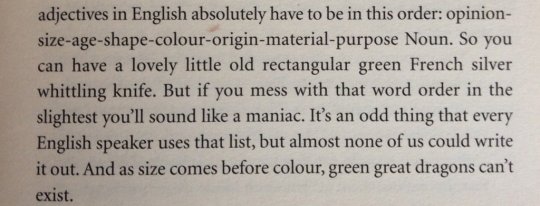
things english speakers know, but don’t know we know.
493K notes
·
View notes
Text
14.3) Conditional Forms (ば)
Hello everyone and welcome back to IsshoNihongo! Let’s continue on with this series of posts about Japanese conditional forms. So far we’ve looked at なら and たら, and how they are used.
In this post, let’s talk about the third conditional form - the ば suffix. As usual, here is your vocabulary:

【Making the ば Forms】
ば is a suffix that indicates the idea of “if”. There are 3 ways to attach this suffix, depending on the part of speech.
For verbs, if it is a Godan verb, you need the え form connector (え、け、せ、て, etc.) and then you can attach ば. If it is an Ichidan verb or する or くる, you just attach れば to the stem.
For adjectives (and also the negative form of verbs) you replace the い with けれ and then attach ば.
Finally for nouns, while you can use the であれば form of the copula, it’s more common to use なら in spoken Japanese. であれば is more often used in formal writing.
Here is a chart to help you visualize what is going on:

Now let’s take a look at 3 of the ways that the ば conditional forms are used, one-by-one.
【1 - Habits】
The ば conditional can be used to talk about habits as well as things that generally happen.
①{ここは天気が良ければ}{とても良い眺めが見られる}。
= as for here, if the weather is good, very good view is able to be seen
= If the weather is good, you can get a very good view here.
② {早くに家を出れば}、{交通渋滞を避ける}。
= if early leave home, traffic congestion avoid
= If I leave home early, I avoid traffic congestion.
③ {カナダに行けば}、{いつもプーティンを食べていた}。
= if go to Canada, always ate Poutine
= Whenever I went to Canada, I used to / would always eat Poutine.
As you can see examples 1 and 2 are expressing things that generally happen if the first clause is true. Example 3 is expressing a past habit. The speaker in example 3 either doesn’t eat Poutine when in Canada, or perhaps doesn’t go to Canada anymore.
【2 - Generalities】
ば is also used for general situations and sayings. These kind of sentences don’t only apply to the listener, they are general pieces of advice for daily life.
④{やる気があれば}{何でもできるよ}。
= if there is willingness, anything can do
= If you have the will, you can do anything (I tell you).
⑤{真剣に頑張れば}{幸せになれる}。
= if seriously try, happiness is able to become
= If you seriously try your best, you can become (truly) happy.
【3 - Hypothetical Conditions】
ば is also often used for situations that are hypothetical. They may or may not come true in the future. This is the most common usage of the ば conditional.
⑥{時間があれば}{カナダへ行いきたい}。
= if there is time, towards Canada want to go
= If I have time, I want to go to Canada.
⑦{時計は高ければ}、{買いません}。
In example 6, notice that the verb of the first clause is ある. Only when you use a verb that expresses a state or condition (ある、いる、できる) can you make a request or say what you want to do.
Example 7 is very interesting. If we remove the ば from the first clause, we are left with 時計が高い. Let’s assume we are talking about a specific watch. There are actually two distinct possibilities - (1) a real situation where the watch is expensive and (2) a completely unreal situation where the watch is expensive.

In English we clearly distinguish between these two situations by changing our verb (is → were) and helping verb (will → would). On the other hand, this concept is not as clearcut in Japanese. (Explaining the difference between the two translations to a native Japanese speaker is very very difficult!) Accordingly, the language has no need to distinguish the two. Example 7 can mean either of our translations - depending on the context.
An interesting extension of the third usage is giving suggestions.
⑧{どうすれば}{いい}?
= how / in what way, if done, would be good?
= What should I do?
⑨{お父さんに電話すれば}{いい}。
= to your father, if you were to call, it would be good
= You should call your father.
Example 8 is the common way to ask for advice when you are unsure about something.
Example 9 is the common way to give advice. Literally, you can think of 〜ばいい as saying “if 〜, it would be good” but a more natural English expression is “should 〜”.
You may remember that using the pattern 〜たほうがいい also gives the idea of “should”. How do they compare?
Well 〜ばいい is a bit softer. This makes sense because ほうがいい implies that there are only 2 ways to do something and that only one of them is good. The other way comes off as being bad.
【Conclusion】
And that is the ば conditional! ば is used in several different JLPT grammar points so don’t worry, we will see this form again and in many other uses.
Next post we will take a look at the fourth and final conditional form. As always, if you have any questions, don’t be shy. I thank you all for the likes, reblogs and private messages; they keep me going when I sometimes want to quit! 🙏🏾 Until next time, take care and good luck with this crazy adventure to learn Japanese.
Rice & Peace,
– AL (アル)
👋🏾
107 notes
·
View notes
Note
Hi, can I ask something?
How do you say "me time", or in a context "oh, I need some me time for a while" "wish I could have some me time" etc? Thanks!😁
Hi! Sure, I actually appreciate your questions, because they distract me from the news.
I'd say, Мне нужно время на себя/ для себя. Or Мне нужно сейчас позаботиться о себе.
33 notes
·
View notes
Text
language learning (affectionate): there are so many words!!
language learning (derogatory): there are so. many. words.
6K notes
·
View notes
Photo
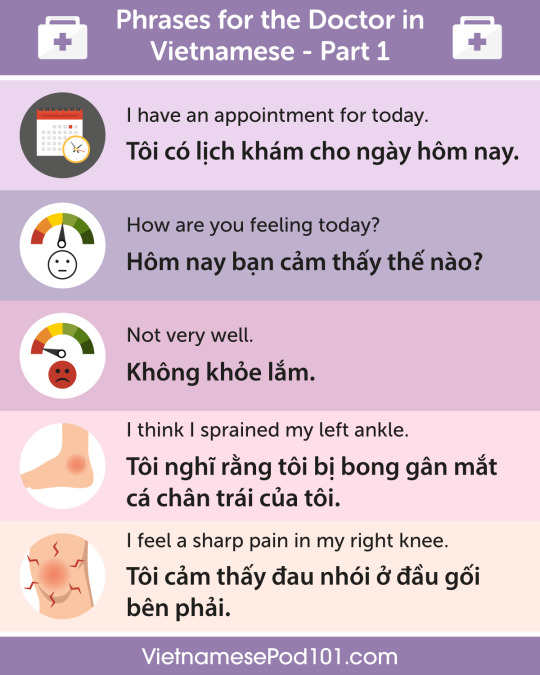
Phrases for the #Doctor in #Vietnamese 👨⚕️🏥 PS: Learn Vietnamese with the best FREE online resources, just click here https://www.vietnamesepod101.com/?src=tumblr_infographic_doctor_1_022422
2 notes
·
View notes
Text






❝Когда нас бьют без причины, мы должны отвечать ударом на удар — я уверена в этом, — и притом с такой силой, чтобы навсегда отучить людей бить нас.❞
— Charlotte Bronte, «Jane Eyre»
178 notes
·
View notes
Text
A Teach Yourself Linguistics Linkfest from Mutual Intelligibility
Looking to teach yourself linguistics? Mutual Intelligibility was a year-long project to help curate free linguistics resources online for people who are trying to teach or learn linguistics, and now all of its posts are collected here for you.
Crash Course Linguistics
A structured introduction to linguistics. Each post contains a 10-12 minute video from Crash Course Linguistics, plus supporting resources on the same topic including exercises with answer keys.
Week 0 - Preview
Week 1 - Introduction
Week 2 - Morphology
Week 3 - Morphosyntax
Week 4 - Syntax
Week 5 - Semantics
Week 6 - Pragmatics
Week 7 - Sociolinguistics
Week 8 - Phonetics, Consonants
Week 9 - Phonetics, Vowels
Week 10 - Phonology
Week 11 - Psycholinguistics
Week 12 - Language acquisition
Week 13 - Historical linguistics and language change
Week 14 - Languages around the world
Week 15 - Computational linguistics
Week 16 - Writing systems
Resource Guides
Longer, more comprehensive guides to a few common intro linguistics topics.
Introduction to IPA Consonants - Resource Guide 1
Introduction to IPA Vowels - Resource Guide 2
Introduction to Morphology - Resource Guide 3
Introduction to Constituency - Resource Guide 4
Introduction to World Englishes - Resource Guide 5
Introduction to Languages around the World - Resource Guide 6
3 Links Posts
Quick highlights of three relevant links about a specific topic, with a short description for each.
3 Links about Linguistics Teaching
3 Links for Second Year Syntax Videos
3 Links for Second Year Phonology
3 Links for Natural Language Processing
3 Links for Semantics and Pragmatics
3 Links for Sociolinguistics
3 Links for Second Year Psycholinguistics
3 Links for Field Methods
3 Links for Articulatory Phonetics
3 Links for Writing Systems
3 Links for Gesture Studies
3 Links for Linguistics Communication (lingcomm)
3 Links for Evidentiality
3 Links for Linguistic Discrimination
3 Links for Linguistics Careers Outside Academia
3 Links for Schwa
3 Links for the Linguistics of Emoji
3 Links for Proto-Indo-European
3 Links for Second Language Acquisition
3 Links for Zero Morphemes
3 Links for Internet Linguistics
3 Links for Language Revitalization
3 Links for Online Teaching
2K notes
·
View notes
Photo

I believe in free education, one that’s available to everyone; no matter their race, gender, age, wealth, etc… This masterpost was created for every knowledge hungry individual out there. I hope it will serve you well. Enjoy!
FREE ONLINE COURSES (here are listed websites that provide huge variety of courses)
Alison
Coursera
FutureLearn
open2study
Khan Academy
edX
P2P U
Academic Earth
iversity
Stanford Online
MIT Open Courseware
Open Yale Courses
BBC Learning
OpenLearn
Carnegie Mellon University OLI
University of Reddit
Saylor
IDEAS, INSPIRATION & NEWS (websites which deliver educational content meant to entertain you and stimulate your brain)
TED
FORA
Big Think
99u
BBC Future
Seriously Amazing
How Stuff Works
Discovery News
National Geographic
Science News
Popular Science
IFLScience
YouTube Edu
NewScientist
DIY & HOW-TO’S (Don’t know how to do that? Want to learn how to do it yourself? Here are some great websites.)
wikiHow
Wonder How To
instructables
eHow
Howcast
MAKE
Do it yourself
FREE TEXTBOOKS & E-BOOKS
OpenStax CNX
Open Textbooks
Bookboon
Textbook Revolution
E-books Directory
FullBooks
Books Should Be Free
Classic Reader
Read Print
Project Gutenberg
AudioBooks For Free
LibriVox
Poem Hunter
Bartleby
MIT Classics
Many Books
Open Textbooks BCcampus
Open Textbook Library
WikiBooks
SCIENTIFIC ARTICLES & JOURNALS
Directory of Open Access Journals
Scitable
PLOS
Wiley Open Access
Springer Open
Oxford Open
Elsevier Open Access
ArXiv
Open Access Library
LEARN:
1. LANGUAGES
Duolingo
BBC Languages
Learn A Language
101languages
Memrise
Livemocha
Foreign Services Institute
My Languages
Surface Languages
Lingualia
OmniGlot
OpenCulture’s Language links
2. COMPUTER SCIENCE & PROGRAMMING
Codecademy
Programmr
GA Dash
CodeHS
w3schools
Code Avengers
Codelearn
The Code Player
Code School
Code.org
Programming Motherf*?$%#
Bento
Bucky’s room
WiBit
Learn Code the Hard Way
Mozilla Developer Network
Microsoft Virtual Academy
3. YOGA & MEDITATION
Learning Yoga
Learn Meditation
Yome
Free Meditation
Online Meditation
Do Yoga With Me
Yoga Learning Center
4. PHOTOGRAPHY & FILMMAKING
Exposure Guide
The Bastards Book of Photography
Cambridge in Color
Best Photo Lessons
Photography Course
Production Now
nyvs
Learn About Film
Film School Online
5. DRAWING & PAINTING
Enliighten
Ctrl+Paint
ArtGraphica
Google Cultural Institute
Drawspace
DragoArt
WetCanvas
6. INSTRUMENTS & MUSIC THEORY
Music Theory
Teoria
Music Theory Videos
Furmanczyk Academy of Music
Dave Conservatoire
Petrucci Music Library
Justin Guitar
Guitar Lessons
Piano Lessons
Zebra Keys
Play Bass Now
7. OTHER UNCATEGORIZED SKILLS
Investopedia
The Chess Website
Chesscademy
Chess.com
Spreeder
ReadSpeeder
First Aid for Free
First Aid Web
NHS Choices
Wolfram Demonstrations Project
Please feel free to add more learning focused websites.
*There are a lot more learning websites out there, but I picked the ones that are, as far as I’m aware, completely free and in my opinion the best/ most useful.
532K notes
·
View notes